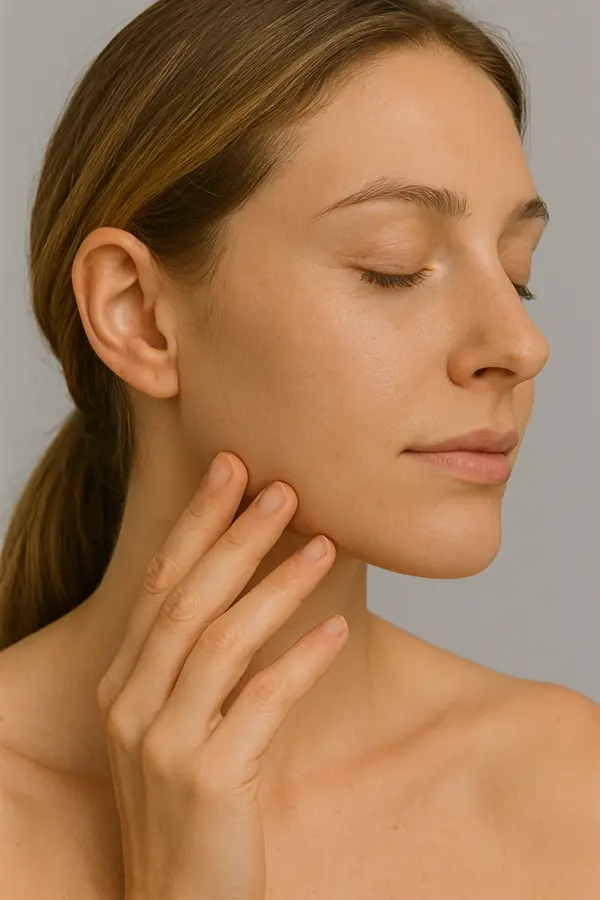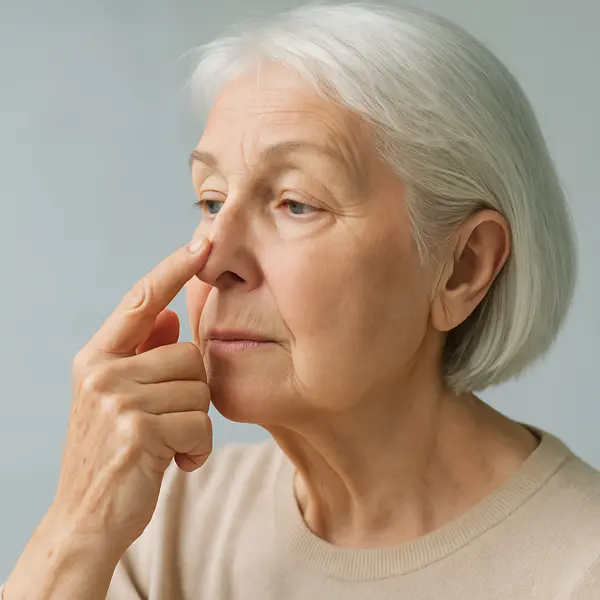Rhinoplasty when you get old presents unique considerations that differ significantly from procedures performed on younger patients.
Rhinoplasty when you get old presents unique considerations that differ significantly from procedures performed on younger patients. As we age, our bodies undergo complex changes that affect both the structure of our nose and our ability to heal from surgical procedures. Understanding these age-related factors is crucial for anyone over 50 considering nose surgery, whether for cosmetic enhancement or functional improvement.
The decision to undergo rhinoplasty later in life involves careful evaluation of multiple medical, anatomical, and lifestyle factors. While age alone doesn't disqualify someone from nose surgery, it does introduce additional variables that must be thoroughly assessed by qualified medical professionals.
The aging process brings predictable changes to nasal anatomy that influence both appearance and function. Research published in the Aesthetic Surgery Journal (2019) demonstrates that nasal cartilage undergoes significant structural modifications over time, becoming less elastic and more prone to displacement.
The nasal tip typically begins to droop due to weakening of the cartilaginous support structures, while the nasal bridge may appear more prominent as surrounding facial tissues lose volume. The American Society of Plastic Surgeons notes that these changes often accelerate after age 60, when collagen production decreases substantially.
Facial skin loses approximately 1% of its collagen annually after age 30, according to dermatological research from the Journal of Investigative Dermatology (2020). This reduction in skin elasticity affects how well the nose can adapt to new contours following rhinoplasty, potentially leading to less predictable aesthetic outcomes in older patients.
The thickness and quality of nasal skin also change with age, becoming thinner in some areas while potentially thickening in others due to sun damage and environmental factors. These variations can significantly impact surgical planning and expected results.
Age-related nasal changes extend beyond aesthetics to affect breathing function. The National Institute on Aging reports that structural changes in the nose, combined with decreased muscle tone in the upper airway, can contribute to breathing difficulties that may worsen over time.
Many older adults develop functional breathing issues related to nasal valve collapse, septal deviations that worsen with age, or chronic inflammation from environmental factors. These functional concerns often become primary motivators for considering rhinoplasty over 60.


Adults over 50 may seek rhinoplasty to address age-related changes that affect facial harmony and self-confidence. Common concerns include nasal tip drooping, increased nostril visibility, and the appearance of a larger nose relative to facial volume loss in other areas.
Research from the Plastic and Reconstructive Surgery journal (2021) indicates that patient satisfaction rates for cosmetic rhinoplasty remain high across age groups, though older patients often have more realistic expectations than their younger counterparts.
Many older adults pursue rhinoplasty primarily for functional improvements rather than cosmetic enhancement. Chronic breathing difficulties, sleep disturbances, and sinus problems may worsen with age, making surgical correction more medically necessary.
The American Academy of Otolaryngology emphasizes that functional rhinoplasty can significantly improve quality of life for older patients, particularly those with age-related nasal valve insufficiency or structural abnormalities that have developed over time.
Rhinoplasty when you get old requires comprehensive evaluation of overall health status and existing medical conditions. Common comorbidities in older adults, such as diabetes, hypertension, and cardiovascular disease, can significantly impact surgical risks and healing outcomes.
A study published in the Annals of Plastic Surgery (2020) found that patients over 65 with well-controlled medical conditions experienced complication rates similar to younger patients, emphasizing the importance of proper pre-operative medical optimization.
Advanced age brings increased sensitivity to anesthesia medications and potentially longer recovery times from sedation. The American Society of Anesthesiologists guidelines
recommend thorough cardiac and pulmonary evaluation for patients over 60 undergoing elective procedures.
Modern anesthesia techniques have significantly improved safety profiles for older patients, but careful monitoring and individualized protocols remain essential for optimal outcomes.
Tissue healing naturally slows with age due to decreased blood flow, reduced cellular regeneration, and changes in immune response. Research indicates that patients over 60 may experience 25-40% longer initial healing phases compared to younger patients.
However, this extended timeline doesn’t necessarily correlate with poorer final results. Many older patients achieve excellent outcomes when realistic timeframes are established and proper post-operative care is maintained.

Setting appropriate expectations is crucial for rhinoplasty over 60. While significant improvements are often achievable, the aging process may limit the degree of change possible compared to procedures performed on younger patients.
The Facial Plastic Surgery journal (2021) reports that older patients who understand these limitations and focus on functional improvements often express higher satisfaction rates than those with primarily cosmetic goals.
Rhinoplasty results in older patients must account for continued aging processes. While surgical improvements are generally permanent, ongoing age-related changes in facial structure and skin quality will continue to affect appearance over time.
Understanding this dynamic helps older patients make informed decisions about timing and expectations for their procedures.
Determining appropriateness for rhinoplasty when you get old involves careful evaluation of both medical necessity and surgical candidacy. Functional breathing problems, chronic sinus issues, or structural abnormalities that significantly impact quality of life often justify surgical intervention regardless of age.
The key factors include overall health stability, realistic expectations, adequate social support for recovery, and commitment to post-operative care protocols.
Comprehensive pre-operative assessment for older rhinoplasty candidates typically includes cardiovascular evaluation, pulmonary function testing, medication review, and assessment of healing capacity. Some surgeons may require additional consultations with internists or cardiologists.
Laboratory studies, including complete blood count, coagulation studies, and metabolic panels, help identify potential risk factors that could affect surgical outcomes.
Some age-related nasal concerns may respond to conservative management approaches. Nasal irrigation, environmental modifications, and treatment of underlying allergic conditions can improve breathing function without surgical intervention.
Weight management, smoking cessation, and optimization of other medical conditions may also enhance nasal function and overall health status for those considering future surgical options.
Recovery from rhinoplasty when you get old typically involves a more extended initial healing period. Swelling and bruising may persist longer than in younger patients, with peak swelling often occurring 48-72 hours post-operatively and gradually resolving over 2-3 weeks.
Most older patients can return to light activities within 7-10 days, though strenuous activities should be avoided for 4-6 weeks to prevent complications and optimize healing.
Final results from rhinoplasty in older adults may not be apparent for 12-18 months, compared to 6-12 months in younger patients. This extended timeline reflects slower tissue remodeling and collagen reformation in aging skin and underlying structures.
Regular follow-up appointments are essential to monitor healing progress and address any concerns that may arise during the extended recovery period.
Current medical literature supports the safety and efficacy of rhinoplasty in carefully selected older patients. A comprehensive review in Aesthetic Plastic Surgery (2022) analyzed outcomes in patients over 60 and found complication rates comparable to younger patients when proper selection criteria were applied.
The Mayo Clinic’s analysis of rhinoplasty outcomes across age groups (2021) demonstrated that functional improvements were achieved in over 85% of older patients, with high satisfaction rates when realistic expectations were established pre-operatively.
Research from Johns Hopkins (2020) identified optimal candidate characteristics for rhinoplasty over 60, including stable medical conditions, good nutritional status, and strong social support systems during recovery.
There is no absolute age limit for rhinoplasty, as surgical candidacy depends more on overall health status than chronological age. Patients in their 70s and 80s have successfully undergone rhinoplasty when their general health is good and medical conditions are well-controlled. The key factors are cardiovascular stability, adequate healing capacity, and realistic expectations rather than age alone.
Rhinoplasty over 60 does carry additional considerations, including slower healing, increased anesthesia sensitivity, and higher likelihood of medical comorbidities. However, with proper pre-operative evaluation and medical optimization, many patients over 60 experience successful outcomes with acceptable risk levels. The risk-benefit ratio must be carefully evaluated for each individual case.
Recovery from rhinoplasty when you get old typically takes 25-40% longer than in younger patients. Initial swelling may persist for 3-4 weeks instead of 2 weeks, and final results may not be apparent for 12-18 months rather than 6-12 months. However, most older patients can resume normal activities within 2-3 weeks with proper post-operative care.
Yes, functional rhinoplasty can significantly improve breathing difficulties in older adults, particularly those related to nasal valve collapse, septal deviation, or structural changes that have worsened with age. Studies show that over 85% of older patients experience meaningful improvement in nasal airflow following well-planned functional rhinoplasty procedures.
Non-surgical alternatives include dermal filler injections for minor contour irregularities, nasal strips for temporary breathing improvement, and medical management of underlying conditions like allergies or chronic sinusitis. While these options cannot achieve the comprehensive results of surgery, they may be appropriate for patients with mild concerns or those who are not surgical candidates.
Having age-related health conditions doesn't automatically disqualify you from rhinoplasty, but it does require careful evaluation and medical optimization. Conditions like controlled diabetes, stable heart disease, or managed hypertension may be compatible with surgery when properly monitored. Your surgeon will work with your other physicians to determine if rhinoplasty is appropriate for your specific health situation.
Areas of Expertise

"Rhinoplasty offers an aesthetic and functional appearance by providing facial harmony."
"Rhinoplasty offers an aesthetic and functional appearance by providing facial harmony."
Detailed Info"Sinusitis is a painful condition caused by inflammation of the sinuses around the nose."
"Sinusitis is a painful condition caused by inflammation of the sinuses around the nose."
Detailed Info"Tonsil diseases are conditions that cause infection and swelling in the throat."
"Tonsil diseases are conditions that cause infection and swelling in the throat."
Detailed Info"Adenoids in children are enlarged lymphoid tissue that can cause nasal congestion."
"Adenoids in children are enlarged lymphoid tissue that can cause nasal congestion."
Detailed Info"Botulinum Toxin provides a youthful and smooth appearance on the face by reducing wrinkles."
"Botulinum Toxin provides a youthful and smooth appearance on the face by reducing wrinkles."
Detailed Info"In children, otitis media can cause earache and hearing problems."
"Facial rejuvenation with non-surgical methods reduces wrinkles and revitalizes the skin."
"Facial rejuvenation with non-surgical methods reduces wrinkles and revitalizes the skin."
Detailed Info"Sleep apnea is a disorder that causes breathing pauses during sleep."
At Dr. Osman Halit Çam’s clinic, we offer internationally recognized, patient-centered care with cutting-edge techniques in modern rhinoplasty and facial aesthetics.
From consultation to recovery, our mission is to provide personalized treatment in a safe, comfortable, and world-class medical environment.
Health innovations, treatment processes, and the latest news about our clinic are shared here.
A Comprehensive Guide to Rhinoplasty Correction Nose Job for Crooked Nose Nose job for crooked nose correction, understanding the procedure, benefits, and what to expect can help you make an informed decision about this transformative treatment. Get Info Nose job for crooked nose A crooked nose can significantly impact both your appearance and quality of […]
Your Complete Guide to Rhinoplasty and Piercings Can I Get a Nose Job with Nose Piercing Can I get nose job with nose piercing? This is one of the most common questions patients ask when planning their cosmetic surgery journey. Get Info Can I Get a Nose Job with Nose Piercing? If you’re considering rhinoplasty […]
What Older Adults Need to Know About Nose Surgery Rhinoplasty When You Get Old Rhinoplasty when you get old presents unique considerations that differ significantly from procedures performed on younger patients. Get Info What Older Adults Need to Know About Nose Surgery Rhinoplasty when you get old presents unique considerations that differ significantly from procedures […]
Each of the contents on this site has been prepared for informational purposes. Do not apply any of the treatment methods described on the site without the supervision of a doctor. Otherwise, the site management and Assoc. Prof. will not be responsible in any way for any problems that may arise. Dr. Osman Halit Çam is not responsible.
© 2023 – All Rights Reserved. Assoc. Dr. Osman Halit Cam
Last Updated: 25.07.2025